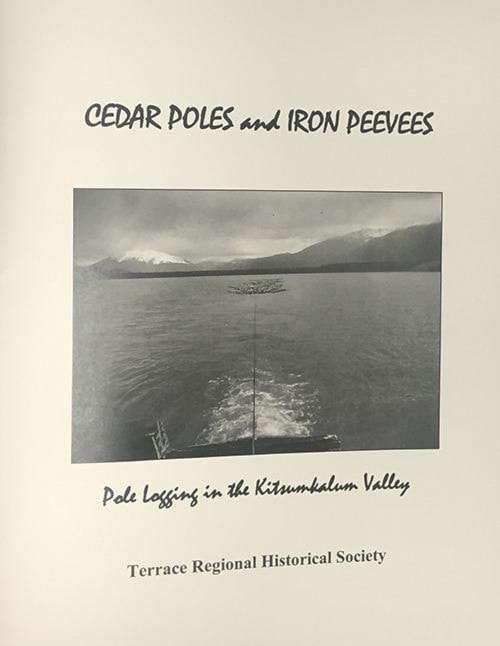Cedar Poles and Iron Peevees: Pole Logging in the Kitsumkalum Valley recounts a lesser-known part of the logging industry here.
Flush with photos, the book details the early part of the century when the LH&K Mill was established when George Little’s sawmill, the largest in Terrace, was sold to George’s son Dudley Little, Chris Haugland, and Duncan Kerr, who named the sawmill after themselves.
It details how logs were loaded, transported and off loaded in various ways and includes memories and photos from John Wright, who began his 43-year forestry career here working for LH&K.
“Our society’s hope with this book was that it would encourage more people to write down and publish the history of the forest industry in this area,” says Norma Kerby, who researched, wrote and put the book together.
Trees logged in the Kalum Valley would be taken along Kalum River to Mud River and the 17 Mile Mill, and then to LH&K Mill in Terrace. Fred Kerby, who owned Skeena Valley Transport, was contracted to haul poles in the late 1940s and 1950s from the 17 Mile Mill to LH&K.
The iron peevee, or peavey, in the book’s title was used to help workers move huge logs onto trucks or off into the water. Invented in the 1850s as an improvement to the cant hook, it had a hardwood handle with a spike used to grab a log and a hook with a pivot, allowing it to attach to logs of different sizes, giving the user leverage. A peevee made it possible for two or three men to load a 60-foot long cedar pole onto a log deck or truck. Cedar Poles and Iron Peevees: Pole Logging in the Kitsumkalum Valley is available at Misty River Books.
